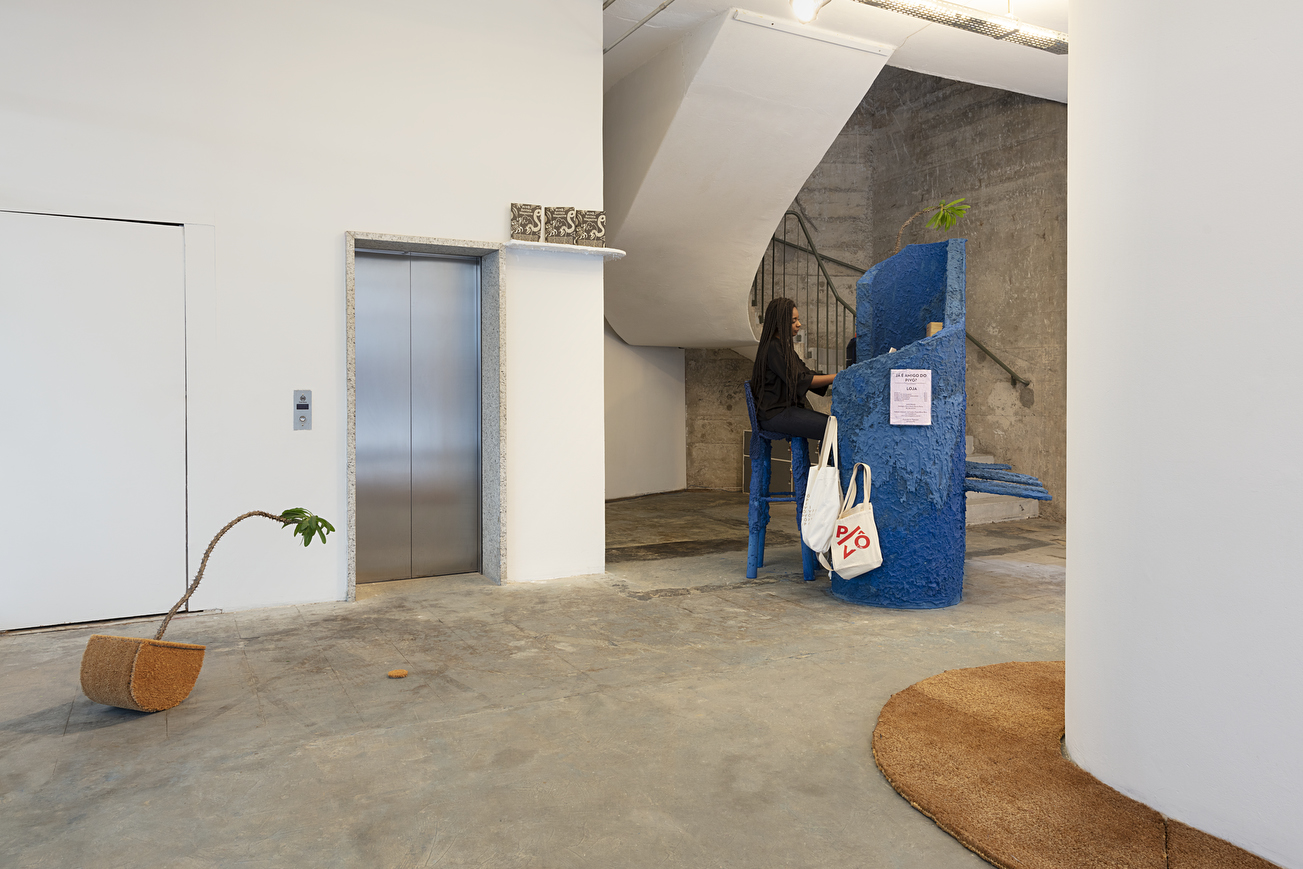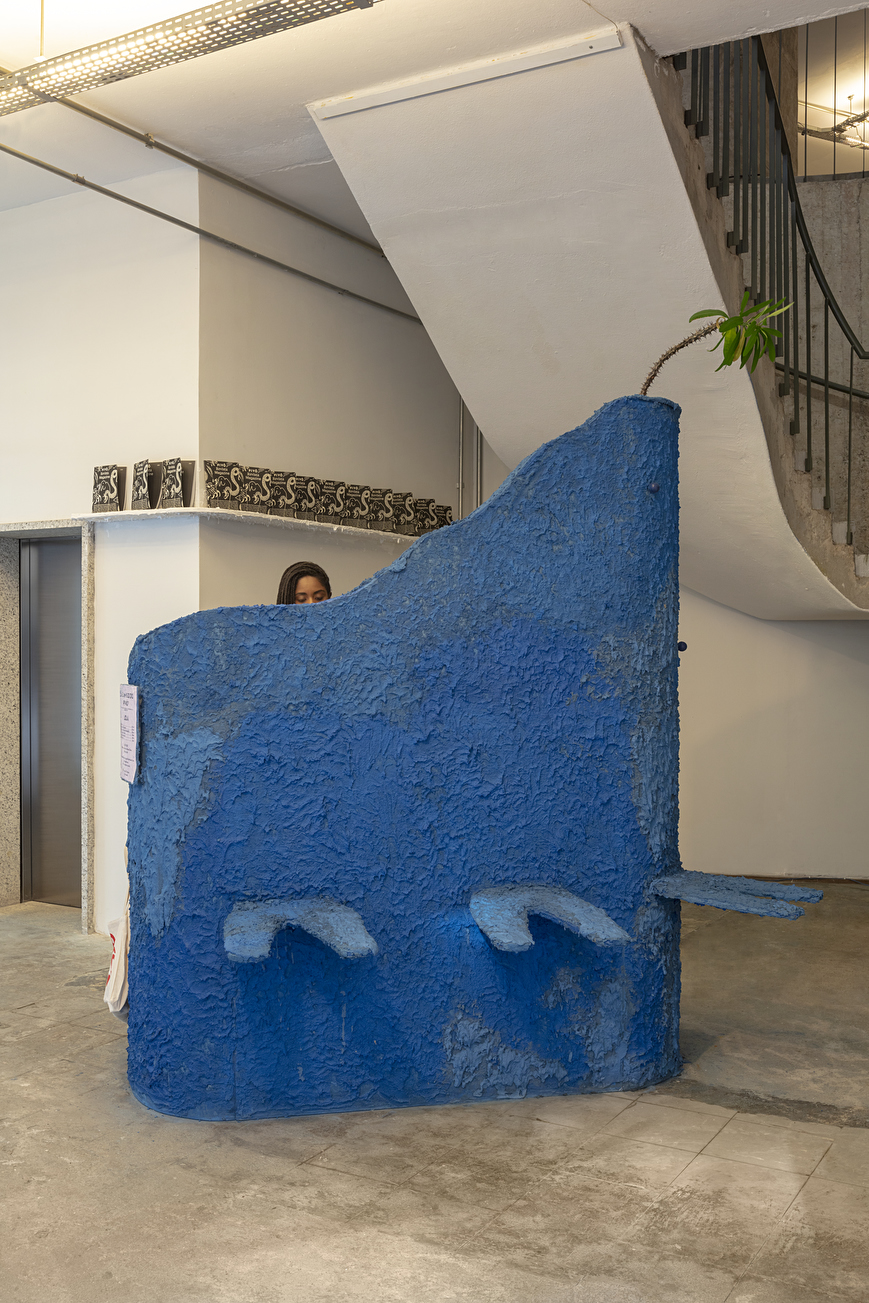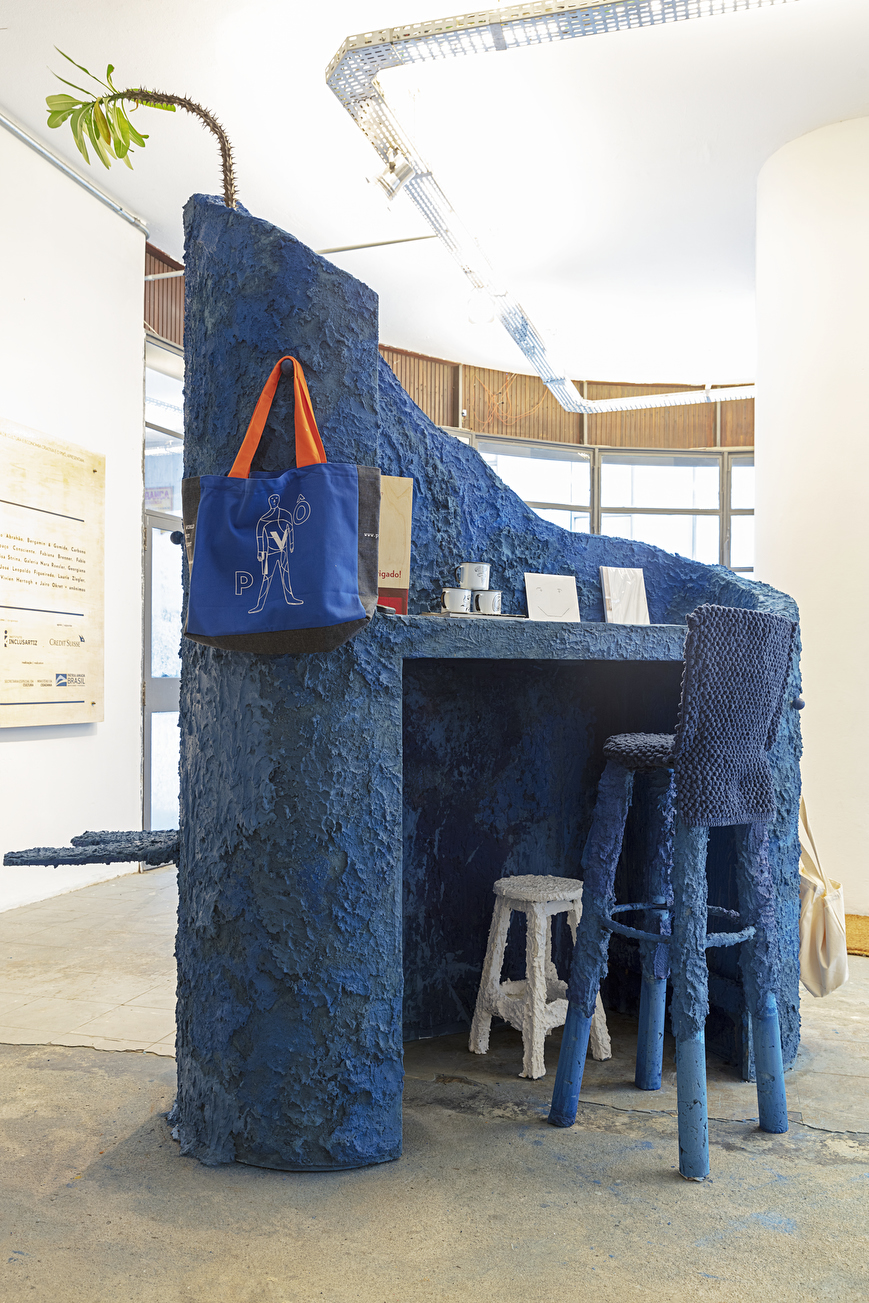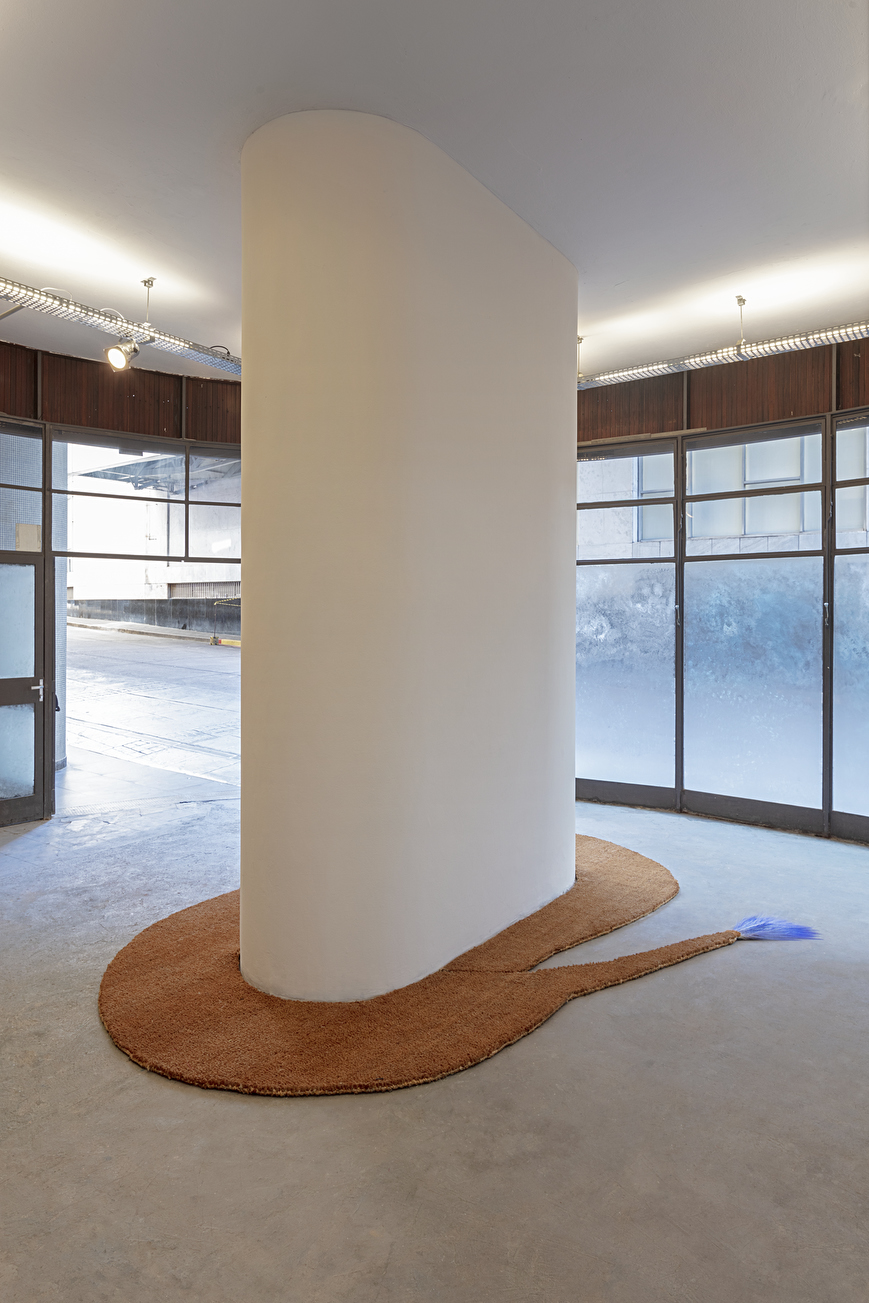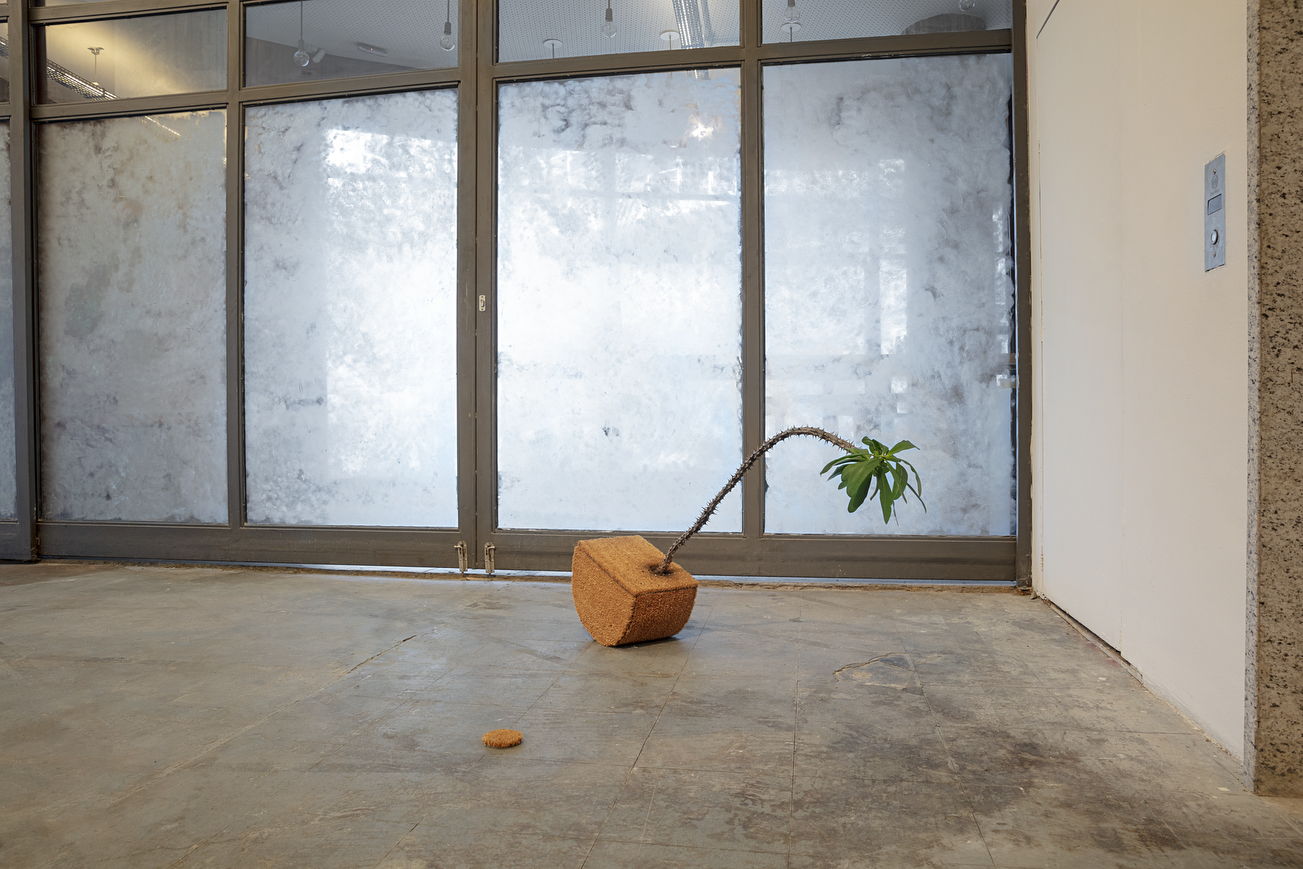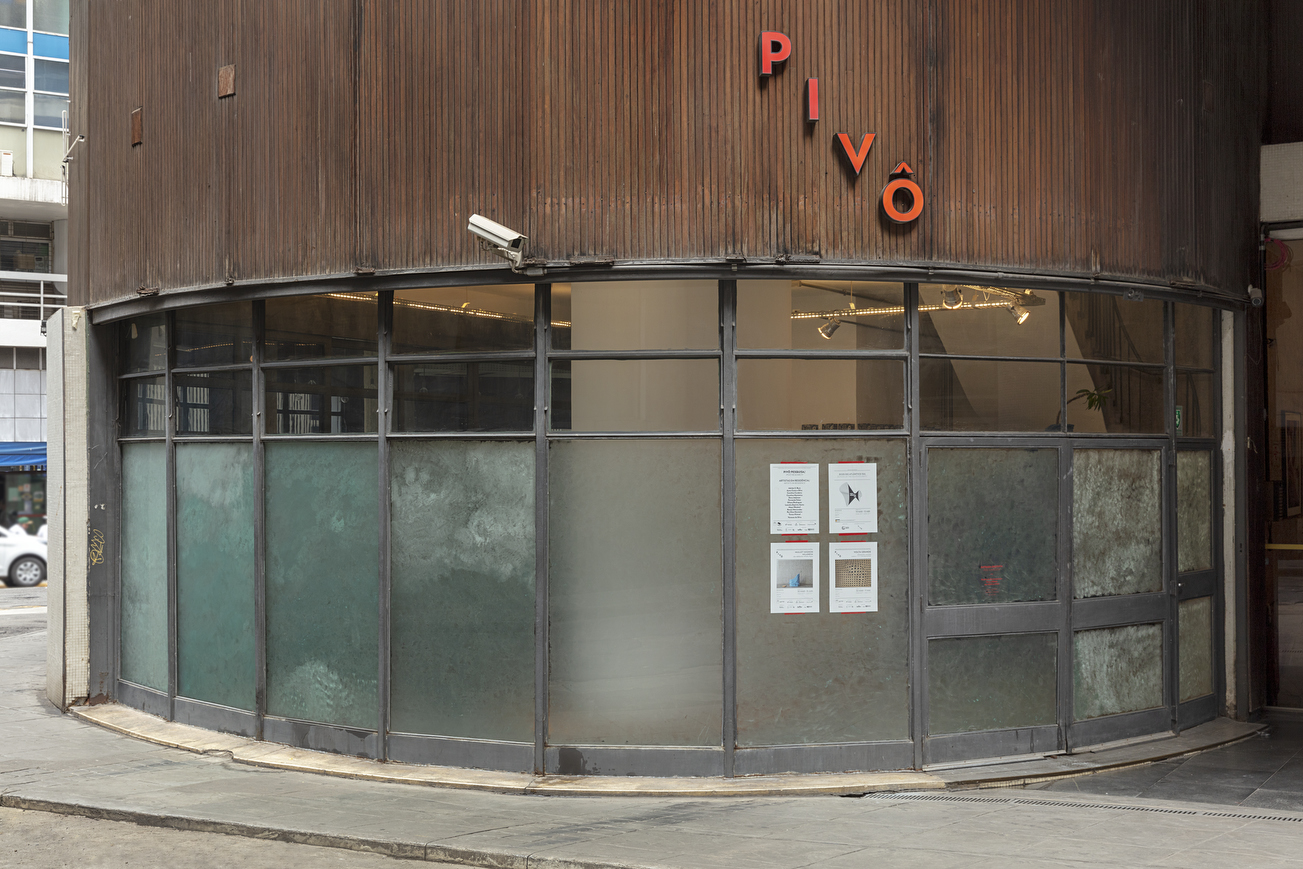
When approaching Pivô’s entrance, one notices a strange texture covering the institution’s glass façade, a sort of sticky dirt or, perhaps, one of those improvised solutions used to cover renovating spaces.
The intervention on the glass is Fumê (2019), one of Cleo’s Dobbethin works for the space connecting Copan’s pedestrian street and Pivô’s interior. The texture deviates the attention of the passerby from the content inside the vitrine. One might ask: Is Pivô closed? Are they building something new?
Döbberthin often unfolds in the boundaries between interiors and exteriors, and she finds in Pivô’s ground floor the ideal situation to continue her research about transitional spaces. Mullet Mignon Milanesa wittingly criticizes its own context: the entrance of an art space inside a humongous mixed-use building. The exhibition’s title refers to the works on view as well as the scale and texture variations that it comprises. Mullet is a doormat placed around the space’s central pillar, ending in a long “hair-strand” resembling a hairdo popular in the 1980s which recently made a come-back (the artist will dye the strand in different colors during the exhibition’s period). Its texture also reminds us of the fried-crust of the alla Milagnese steaks often present in São Paulo’s meals. The alliteration in the title reflects the artist’ irreverent methods of association, in which she entangles images, slangs and objects by her own will.
Döbberthin works with sculptures that replicate architectural elements and site-driven interventions, nodding to the standardization and conventions brought by industrial design and urban architecture, and its effect in the body or gender-related issues. Copanzinho (2019) is a furniture-sculpture that acts as the institution’s front desk as well as it’s shop. Attached to its surface, three silhouettes made from leg contours, stand as welcoming seats for the awaiting visitors. The daily activities of Pivô’s reception are, from now on, performed in this weird stool or, perhaps, a vase, since it also hosts a planted crown-of-thorns. The sculpture is like an enlarged version of some of the artist’s previous works, Mocinha (2018) and Vulcão (2018), in which stolen plants are grown on Styrofoam blocks, covered in doormats or cement, resembling islands or medusas.
Dramaqueen (2017), the only existing work on view, is part of this previously mentioned series with living plants that she has been working in since 2017. The plants she chooses are commonly used in Brazil to build living fences, their weird sinuous shapes are in fact a somewhat ridiculous security device.
The melancholic shapes of this vessels mock the imposing and utopic aspects of modernist thinking. The image of a crown-of-thorns sprouting from Döbberthin’s imprecise geometrical structures-, nod to everyday scenes in São Paulo, where plants break the street’s asphalt, or tear holes in concrete walls , showing how pre-conceived ideas and projects can easily fall apart or find complete different outcomes in our daily experience .

 Português
Português